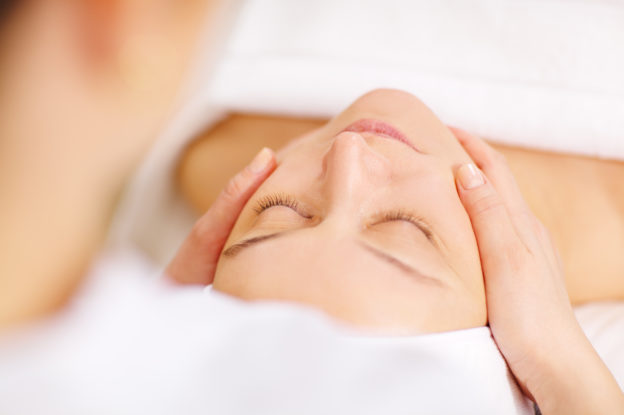Are you tired of trying to cover fine lines and wrinkles with makeup? Have you noticed that your skin has lost its glow?
The average American woman spends more than $250,000 on makeup over the course of her lifetime. Trying to cover up wrinkles or minimize peach fuzz can be maddening, but what if there were another option?
Dermaplaning is a new skin treatment that can help you throw away your makeup. OK, you can keep some, but you might not need that concealer any more.
In this article, we’ll give you the inside scoop on this exhilarating skin treatment and help you get started with a skin specialist near you.
What is Dermaplaning?
Dermaplaning is a safe, outpatient procedure that removes the top layer of your skin. A trained aesthetician uses a surgical blade to gently scrape away dead skin.
It might sound a little nerve-racking, but the procedure is simple and harmless. You can go home the same day and there’s typically no recovery time.
The only thing you’ll need to do after a dermaplaning session is put on a bit more sunscreen for a few weeks. The treatments are safe and you can have them done about once per month.
There are a few kits available for home dermaplaning, but we recommend seeing a professional. They’re trained to gently exfoliate even the toughest, driest skin.
To get started, try searching online for “dermaplaning near me.”
Combining Skin Treatments
Before you commit to a skin treatment, it’s OK to ask your spa for dermaplaning before and after photos. You might be shocked at how much of a difference a quick dermaplaning session can make.
If you want, you can combine skin treatments. Have a dermaplaning session to remove dead skin and peach fuzz, and then treat yourself to an oxygen infusion session or even some Botox.
Talk to your spa about the end result you’d like to achieve. They will help you select a series of treatments that will be beneficial to your skin and your overall look.
If you’ve never had a skin treatment before, dermaplaning is a great way to start. If you’ve got acne scars, dull skin, or even hyper-pigmentation, a dermaplaning treatment can be an effective treatment option.
What to Expect at a Spa Day
If you’ve never had a day of beauty at a spa, this is the perfect time to start. When you book your appointment, explain your beauty goals and frustrations.
Do you want to focus on hair removal or does your skin need some attention? Your spa will help you find the perfect combination of treatments.
You might end up going once per month to get your dermaplaning done, or every few weeks to have laser hair removal sessions.
When you go to your local spa, make sure that you’re wearing loose, comfortable clothing. A pair of yoga pants and a nice t-shirt should be fine.
If you’re a bit nervous, try to bring a friend who’s been to that spa before. If you can, try to find someone who’s already had a dermaplaning treatment.
When you call to book your appointment, you can request the same aesthetician.
Potential Side Effects
The great thing about dermaplaning is that it doesn’t cause any serious side effects. Your face might feel a little bit tight for a few days, but that’s a good thing. It means that your skin is responding to the treatment.
Another potential side effect is sensitivity to light. For a few weeks after a dermaplaning session, you should wear a higher SPF sunscreen and wear a hat outside.
The myth about dermaplaning is that facial hair will just grow back thicker after it’s been removed. This is just untrue. Any hair that gets removed will grow back at its normal rate.
You can also wear makeup right away after a dermaplaning session. You might find that you need fewer products because your skin is in much better condition.
Dermaplaning costs can vary, so ask your spa or salon what they charge.
Dermaplaning vs. Dermabrasion
It’s important to remember that a dermaplaning facial is not the same as dermabrasion. Dermabrasion is a lot like a chemical peel and can penetrate more deeply than dermaplaning.
Dermabrasion is typically performed in a hospital setting, and its side effects can be serious. People who get fever blisters might find that they crop up after a dermabrasion treatment.
Where dermaplaning might leave your skin a little bit pink for a few days, dermabrasion can leave your skin looking red for three months.
People who have very pale skin can undergo dermabrasion, but everyone else runs the risk of visible scarring and permanent pigment loss.
If you have severe acne scarring, you might want to start with a dermaplaning session. You might like the results and be able to avoid in-patient dermabrasion treatments.
Get Started with Dermaplaning Near Me
To get started with dermaplaning, talk to your friends and colleagues about the treatments they’ve had. Is there a particular spa that they recommend?
Again, take the time to ask for before and after photos of skin treatments. When you feel comfortable with a spa, you can go ahead and book your appointment.
Make sure to block off enough time so that you don’t feel rushed. If your treatment takes an hour, don’t make any appointments for three hours afterward.
After you have a dermaplaning treatment, try to take a nap and drink some extra water. The treatment itself won’t dehydrate you, but it’s good to rest the body after an intensive skin therapy session.
We offer dozens of skin treatment options including Botox, body contouring, and laser hair removal. Our blog offers expert advice about skin care and a healthy lifestyle.
We service Carlsbad, Encinitas, Rancho Santa Fe, and all the surrounding areas. Give us a call or send us an email online so we can book your free consultation!


